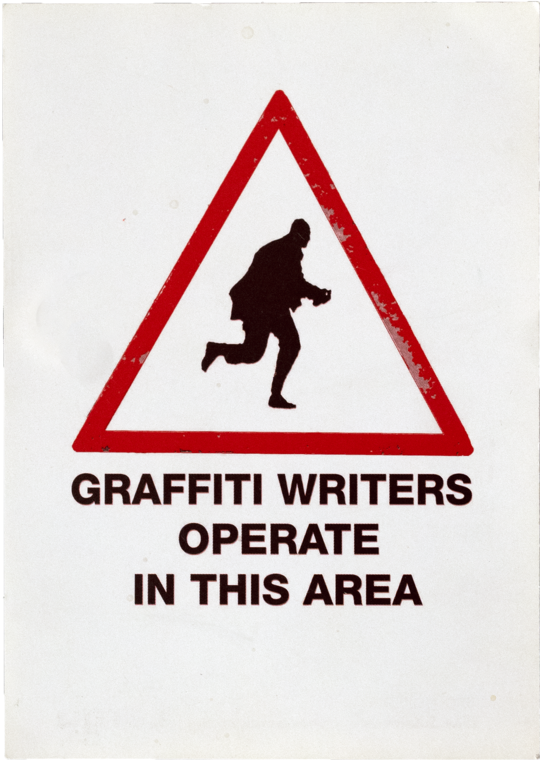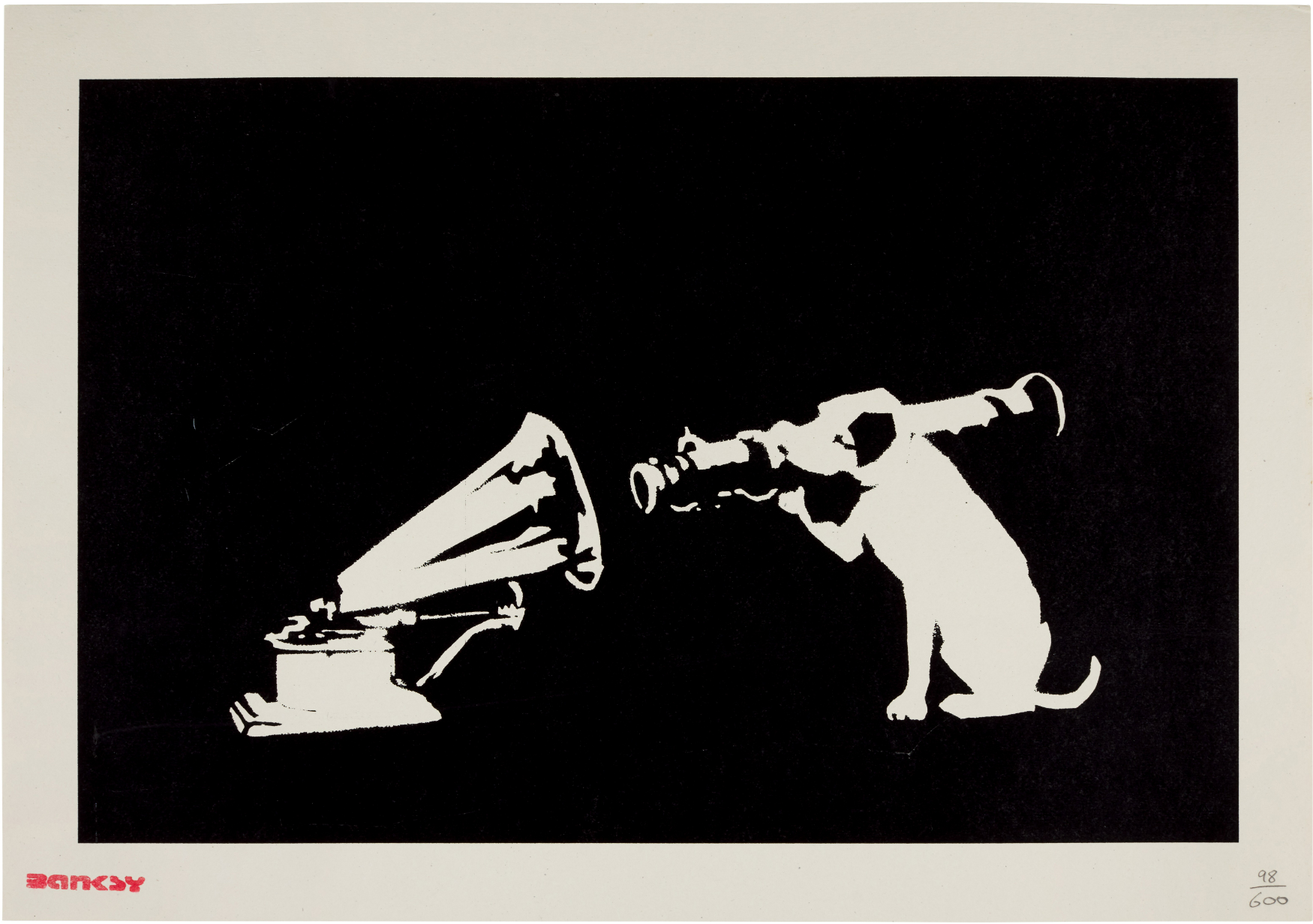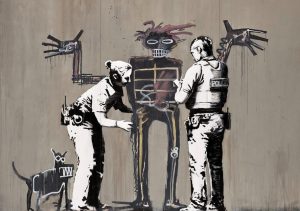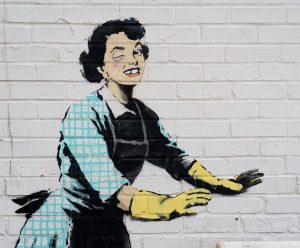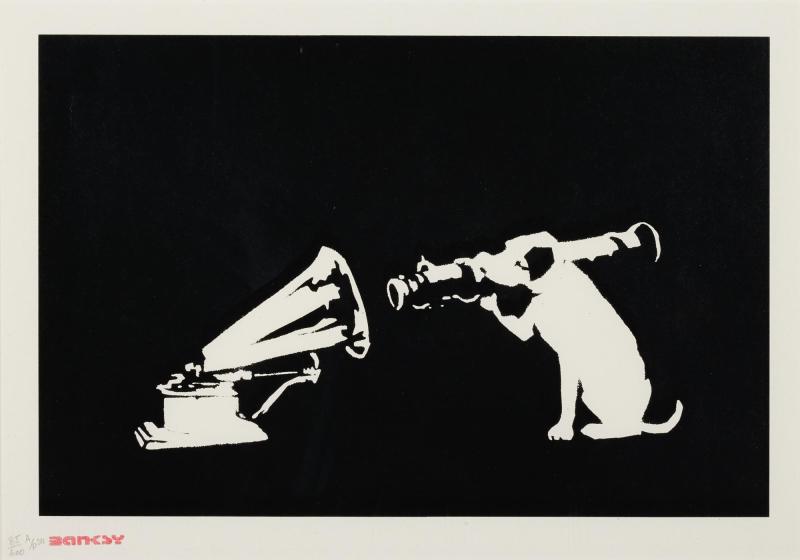
HMV, 2003
Editions: 150 signed, 600 unsigned
‘The small print that packs a powerful punch.
It would say if this was the Argos catalogue.’
HMV, also known as His Master’s Voice, or Rocket Dog portrays a white dog casually pointing a bazooka towards a 19th century gramophone. Banksy seems to be commenting on the old-fashioned nature of the music industry which the dog intends to bring down. The use of block black and white detail adds to the work’s impact. Banksy appropriates the iconic logo of the British popular music and entertainment firm that was created in the 1920s. This work could also illustrate the lost battle of music retailers in the digital era. The gramophone also symbolizes past generations and conservatism the dog is determined to destroy in order to create room for something new.

Francois Barraud, His Master’s Voice, 1899
Banksy appropriates the iconic logo of the British popular music and entertainment firm of the same name that was created in the 1920s. The company logo itself derives from a painting by the English painter Francis Barraud that depicts a dog, called Nipper, listening intently to a cylinder phonograph. The original painting was created in 1899.
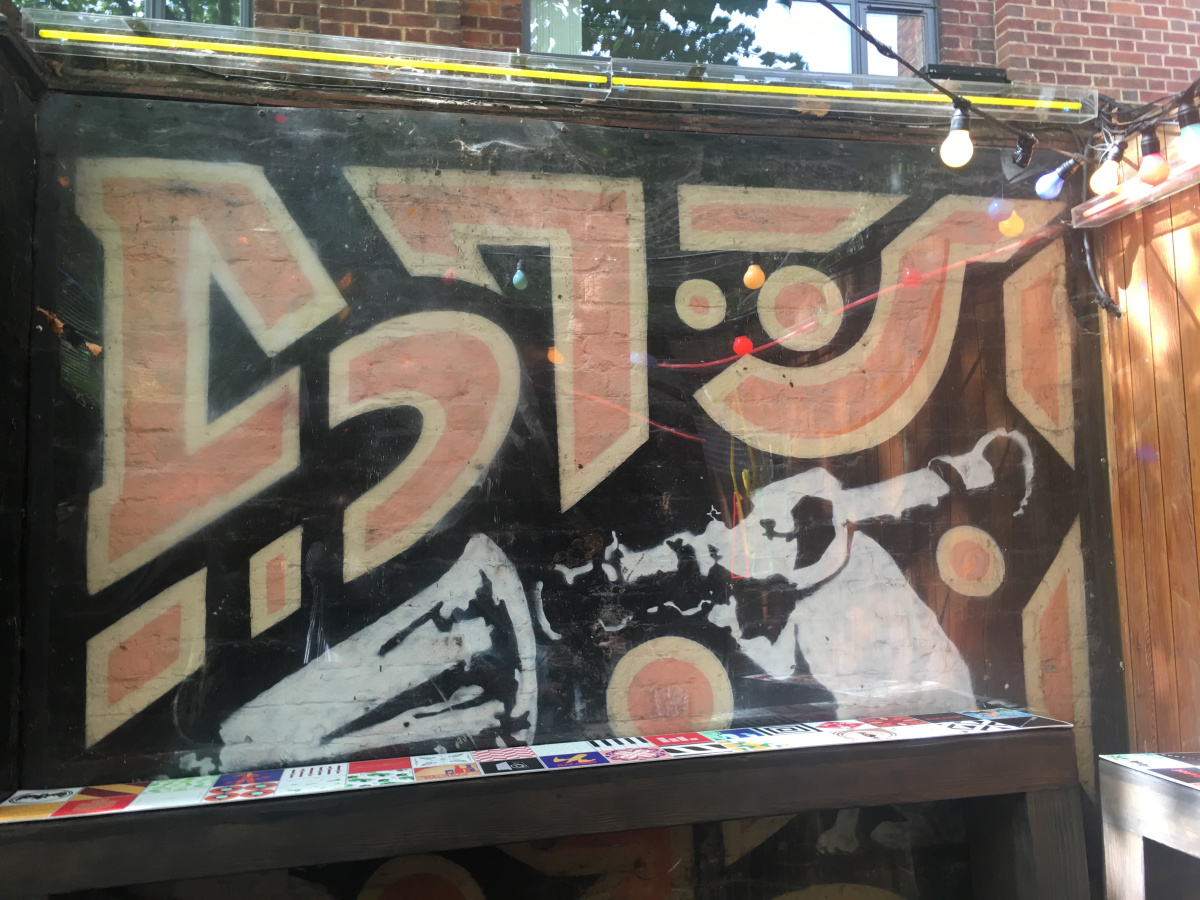
HMV Dog, Cargo Night Club, London, 2003
HMV Dog was first tagged on the streets of Banksy’s hometown of Bristol. Then in 2003, the artist used the stencil on the walls of the courtyard of the Cargo nightclub in London, this time with a colorful background consisting of undefined yellow and orange forms. Cargo, a well-known venue on Rivington Street in the middle of Shoreditch, outside of London, is built inside an old railway tunnel showcasing murals from many urban artists. Acclaimed as a local masterpiece, Banksy’s work has been protected by perspex for about 15 years now and crowds still gather to see it.
Invitation to Cargo Club to inaugurate HMV Dog, June 2003

His Master’s Voice (HMV) was the unofficial name of a major British record label created in 1901 by The Gramophone Co. Ltd. The phrase was first coined in the late 1890s as the title of a painting depicting a terrier dog named Nipper listening to a cylinder phonograph. It is probably the most famous trademark in the recording industry. In 1898, three years after Nipper’s death, Francis Barraud, his owner and brother of his first owner, painted a picture of Nipper listening intently to a wind-up Edison-Bell cylinder phonograph. On February 11, 1899, Francis Barraud filed an application for copyright of his painting “Dog Looking At and Listening to a Phonograph.”

In the 1970s, the statue of the dog and gramophone, His Master’s Voice, were cloaked in bronze and was awarded by the record company EMI to artists or music producers or composers as a music award and often only after selling more than 100,000 recordings.
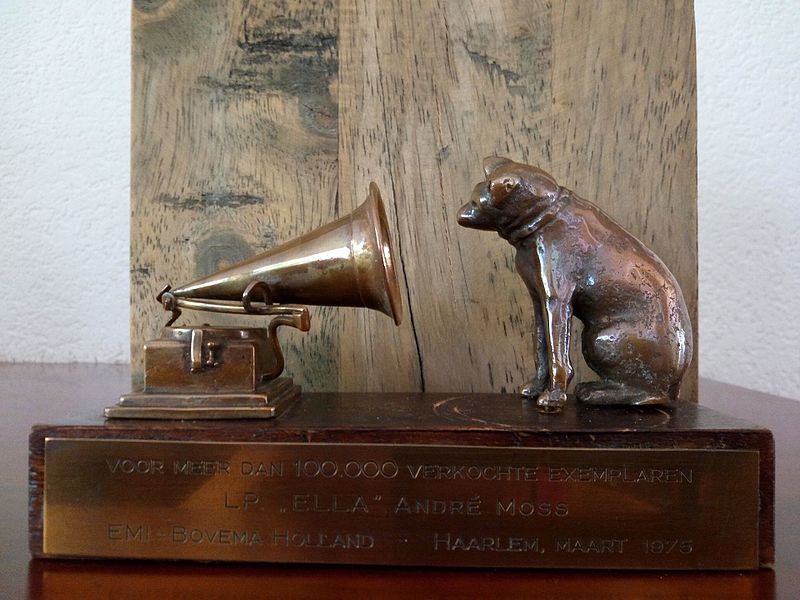
Thinking the Edison-Bell Company located in New Jersey, USA, might find it useful, he presented it to James E. Hough, who promptly said, “Dogs don’t listen to phonographs.” On May 31, 1899, Francis Barraud went to the Maiden Lane offices of The Gramophone Company with the intention of borrowing a brass horn to replace the original black horn on the painting. Manager William Barry Owen suggested that if the artist replaced the machine with a Berliner disc gramophone, the company would buy the painting. A modified form of the painting became the successful trademark of HMV records, HMV music stores, and RCA. The trademark itself was registered by Berliner on July 10, 1900. (HMV is short for, His Master’s Voice.)

The slogan ‘His Master’s Voice’, along with the painting, was sold to The Gramophone Company for 100 pounds sterling. Francis Barraud said: “It is difficult to say how the idea came to me beyond that fact that it suddenly occurred to me that to have my dog listening to the phonograph, with an intelligent and rather puzzled expression, and call it “His Master’s Voice” would make an excellent subject. We had a phonograph and I often noticed how puzzled he was to make out where the voice came from. It certainly was the happiest thought I ever had”
DESCRIPTION
HMV, His Master’s Voice, Rocket Dog
Year: 2003
Medium: Screen-print in black on wove paper
Size: 35×50 cm (13 5/8 x 19 1/2 inches)
Publisher: Pictures on Walls
Editions
Signed Edition: 150
Unsigned Edition: 600
AUCTION RESULTS
Updated as of 15 March 2023
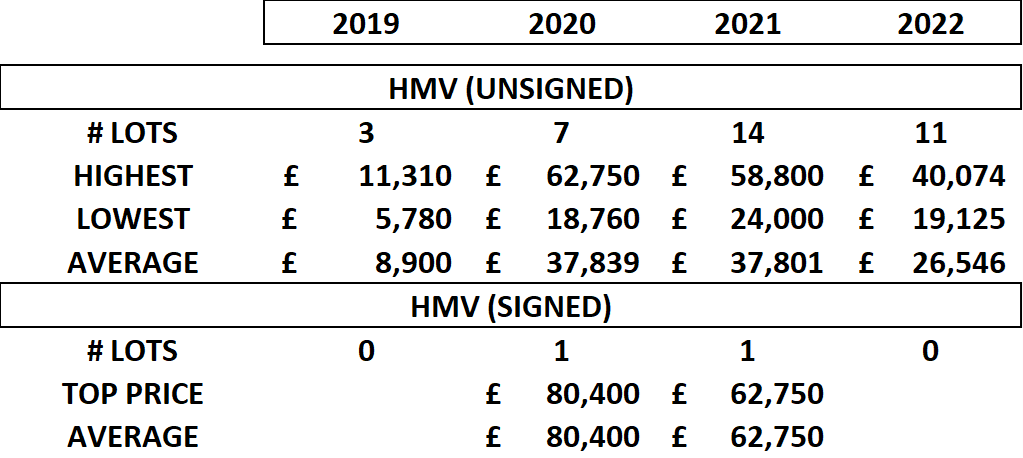
1. HMV (unsigned)

HMV (unsigned), 2003
Numbered 460/600 and inscribed ‘DN’ in pencil, with the publisher’s blindstamp, lower right
Bonhams London: 21 September 2022
GBP 19,125 / USD 21,668

HMV (unsigned), 2003
Numbered 192/600 in pencil, lower right
Stamped with the BANKSY tag in red ink, lower left
Sotheby’s online: 17 August 2022
Estimated: GBP 12,000 – 18,000
GBP 25,200 / USD 30,240
HMV Dog (unsigned), 2004
Numbered 98/600 in pencil, lower right
Stamped with the BANKSY tag in red ink, lower left
Sotheby’s online: 26 April 2022
GBP 25,200 / USD 31,752

HMV (unsigned), 2004
Numbered 90/600, lower right
Stamped with the BANKSY tag in red ink, lower left
Bonhams London: 22 September 2021
GBP 24,000 / USD 33,360

HMV (unsigned), 2004
Numbered 476/600 in pencil with the publisher’s blindstamp, lower right
Stamped with the BANKSY tag in red ink, lower left
Sotheby’s online: 18 March 2021
GBP 52,920 / USD 73,559
2. HMV (signed)

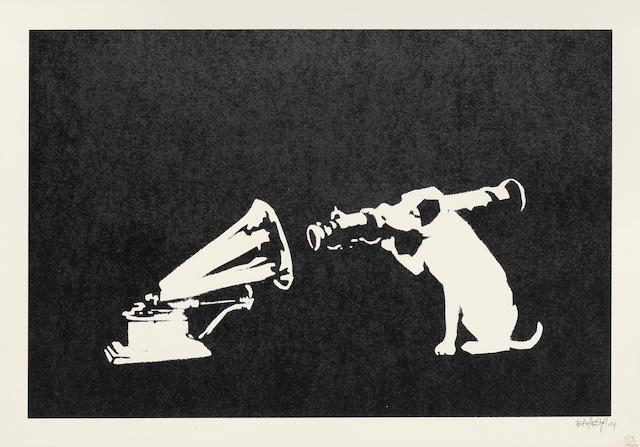
HMV Dog (signed), 2004
Signed and dated in pencil, lower right
Numbered 59/150, lower right
Numbered 59/150, lower right
Bonhams London: 11 November 2021
GBP 62,750 / USD 84,713
